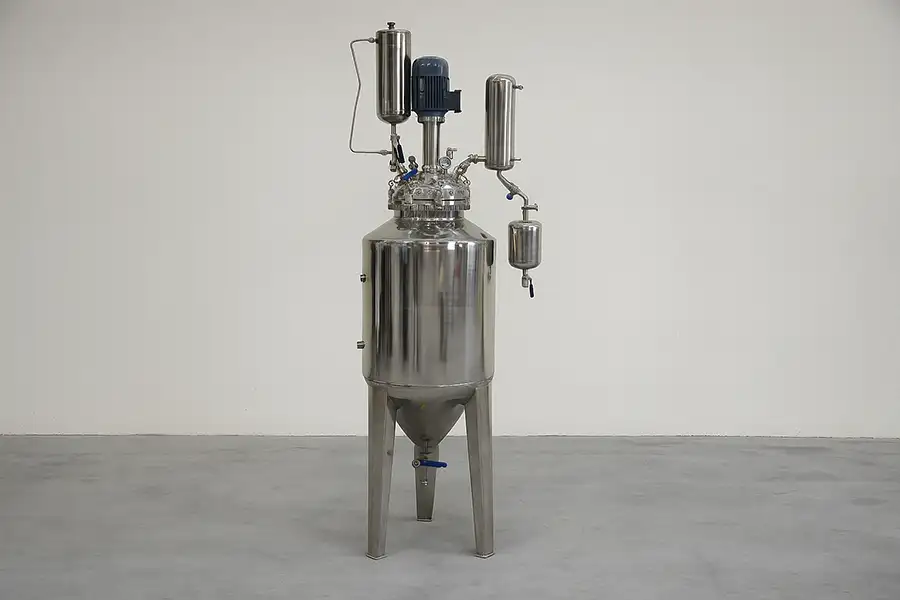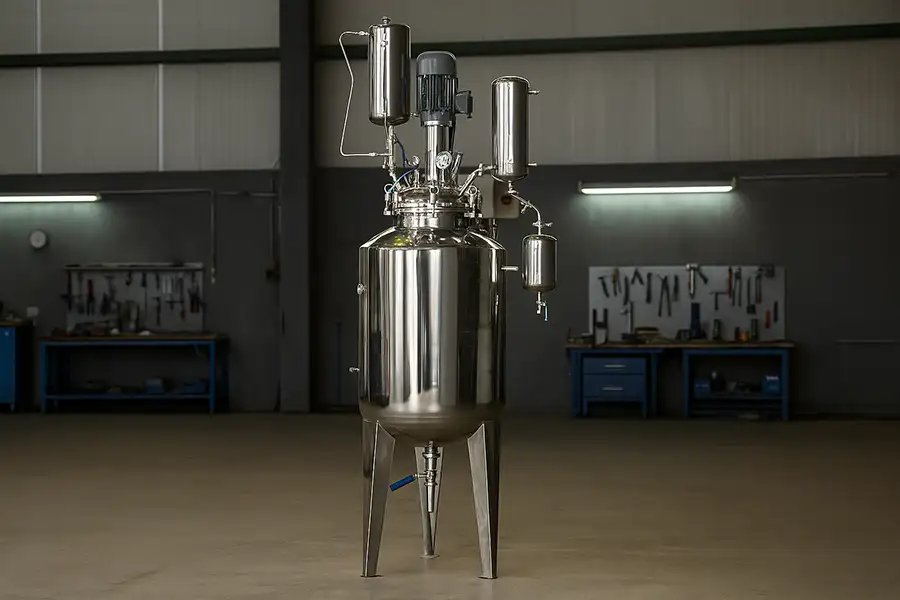What is a Jacketed Glass Reactor?
A jacketed glass reactor is a type of vessel used in laboratories and chemical industries for mixing, reaction, and temperature control. The “jacket” refers to the outer layer surrounding the main glass vessel, allowing a heating or cooling fluid to circulate and control the temperature inside.

These reactors are popular in research settings because glass provides excellent visibility and chemical resistance against many solvents. However, when scaling up for industrial production, glass reactors often face limitations in pressure handling, mechanical strength, and long-term durability.
Applications of Jacketed Glass Reactors
Jacketed glass reactors are widely used for:
- Pharmaceutical synthesis
- Organic chemical reactions
- Polymerization processes
- Solvent recovery experiments
The transparency of glass allows direct observation of the reaction process, which is critical in R&D environments. But in large-scale manufacturing, visibility is less important than strength, safety, and efficiency.
Limitations of Jacketed Glass Reactors
Could a jacketed glass reactor handle high pressures in industrial applications?
In most cases, no. Glass reactors typically operate at low pressures due to the risk of breakage. For high-pressure reactions, stainless steel reactors are preferred because they can safely withstand pressures exceeding 20 bar.
Glass is brittle, making it vulnerable to sudden temperature changes and mechanical shocks. Additionally, large-scale jacketed glass reactors are expensive to produce and transport, and their maintenance can be challenging.
Why Stainless Steel Reactors Are a Better Choice for Industry
Stainless steel reactors offer superior mechanical strength, corrosion resistance, and adaptability for high-pressure and high-temperature processes. They are also easier to clean and maintain, making them ideal for continuous industrial operations.

According to a study by the American Institute of Chemical Engineers (AIChE), switching from glass to stainless steel reactors in pharmaceutical manufacturing reduced downtime by 18% and maintenance costs by 25%.
Learn more about stainless steel reactors here: Stainless Steel Chemical Reactor.
Glass vs Stainless Steel: A Quick Comparison
| Feature | Jacketed Glass Reactor | Stainless Steel Reactor |
|---|---|---|
| Pressure Resistance | Low (typically < 3 bar) | High (> 20 bar) |
| Temperature Range | -80°C to +200°C | -196°C to +500°C |
| Durability | Brittle, prone to breakage | Robust, long-lasting |
| Visibility | Excellent | Limited |
| Cost (Industrial Scale) | High | Moderate |
Future Trends in Reactor Technology
Based on MIT’s research, AI is expected to automate up to 30% of manufacturing jobs by 2030. In chemical processing, smart reactors with sensors and AI-driven controls will become more common, enabling precise temperature, pressure, and reaction time management.
Will AI integration benefit both glass and stainless steel reactors?
Absolutely. AI can enhance safety, efficiency, and consistency in both types of reactors. However, stainless steel reactors are more adaptable to industrial-scale AI integration due to their durability and ability to handle diverse process conditions.
Upgrade to Stainless Steel Reactors
If your process requires high pressure, high temperature, or long-term durability, consider switching to stainless steel reactors. Explore our stainless steel reactor solutions today.
